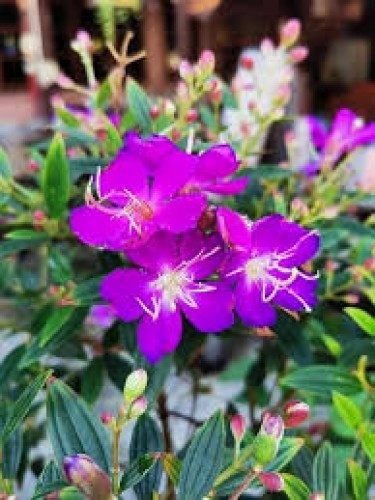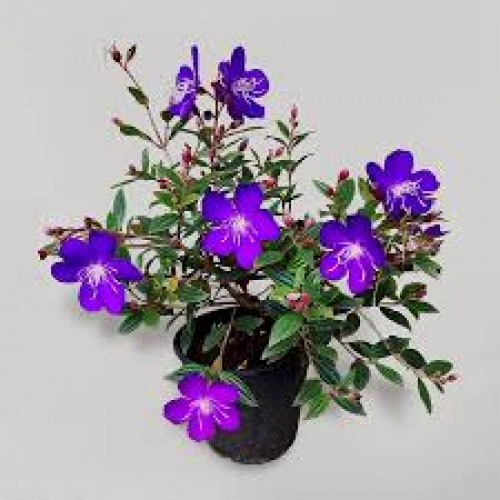60%
off
off
-
Sold
-

-

out
Begum Bahar (Tibouchina semidecandra)
Begum Bahar, commonly known as the Princess Flower or Glory Bush, is a fast-growing, evergreen shrub renowned for its vibrant purple, pink, or white flowers and lush green foliage. Native to Brazil, it is widely cultivated in tropical and subtropical regions, including India and Pakistan, for its ornamental beauty and traditional medicinal uses.
Botanical Overview
- Scientific Name: Tibouchina semidecandra
- Family: Melastomataceae
- Common Names: Begum Bahar, Princess Flower, Glory Bush, Lady of Spring
- Origin: Brazil
- Growth Habit: Woody shrub or small tree
- Height: Typically 10–15 feet (3–4.5 meters)
- Flowering Season in India: March to May and August to December
Key Features
- Flowers: Large, vibrant blossoms in shades of purple, pink, or white, blooming in clusters at the branch tips.
- Foliage: Oblong, dark green, hairy leaves arranged alternately along the stems.
- Fragrance: Mildly fragrant flowers that attract pollinators like bees and butterflies.
- Wildlife Attraction: Provides nectar for various pollinators, enhancing garden biodiversity.
Cultivation & Care
- Sunlight: Thrives in full to partial sunlight; requires 4–6 hours of sunlight daily. During peak summer, provide light shade to prevent leaf scorch.
- Soil: Prefers well-drained, fertile soil rich in organic matter. A mixture of loamy and sandy soil with additions like cocopeat and vermicompost is ideal.
- Watering: Water when the topsoil feels dry. Increase frequency during hot, dry periods. Avoid overwatering to prevent root rot.
- Fertilization: Apply organic fertilizers like vermicompost monthly during the growing season (January to March). Water immediately after fertilizing to aid nutrient absorption.
- Pruning: Prune in February before the flowering season to encourage bushier growth and more blooms. Remove dead or diseased branches regularly.
- Pest Management: Monitor for fungal infections or pests. Use natural remedies like neem oil or a neem and aloe vera mix to treat infestations.
- Propagation: Propagate through semi-hardwood cuttings planted in a moist sand and compost mixture.
Uses & Benefits
- Ornamental: Popular choice for gardens and landscapes due to its vibrant flowers and lush foliage.
- Medicinal: Traditionally used in Ayurvedic and Unani medicine to treat ailments like skin irritations and digestive issues. The plant possesses anti-inflammatory properties. [Source]
- Environmental: Acts as a natural air purifier and contributes to the ecological balance by attracting pollinators. [Source]
Considerations
- Sun Exposure: While the plant enjoys sunlight, excessive exposure during peak summer can cause leaf burn. Provide partial shade during these periods.
- Watering: Overwatering can lead to fungal growth. Ensure the soil is well-drained and water only when necessary.
- Maintenance: Regular pruning and monitoring for pests or diseases are essential for optimal growth and flowering.